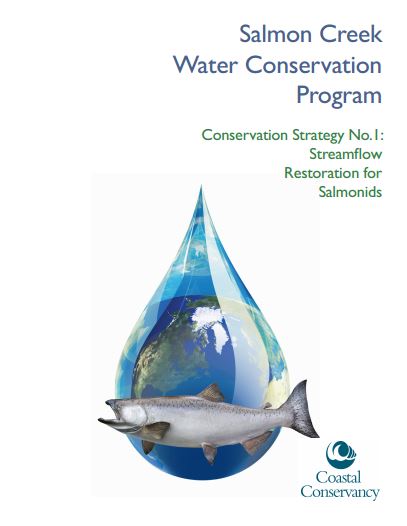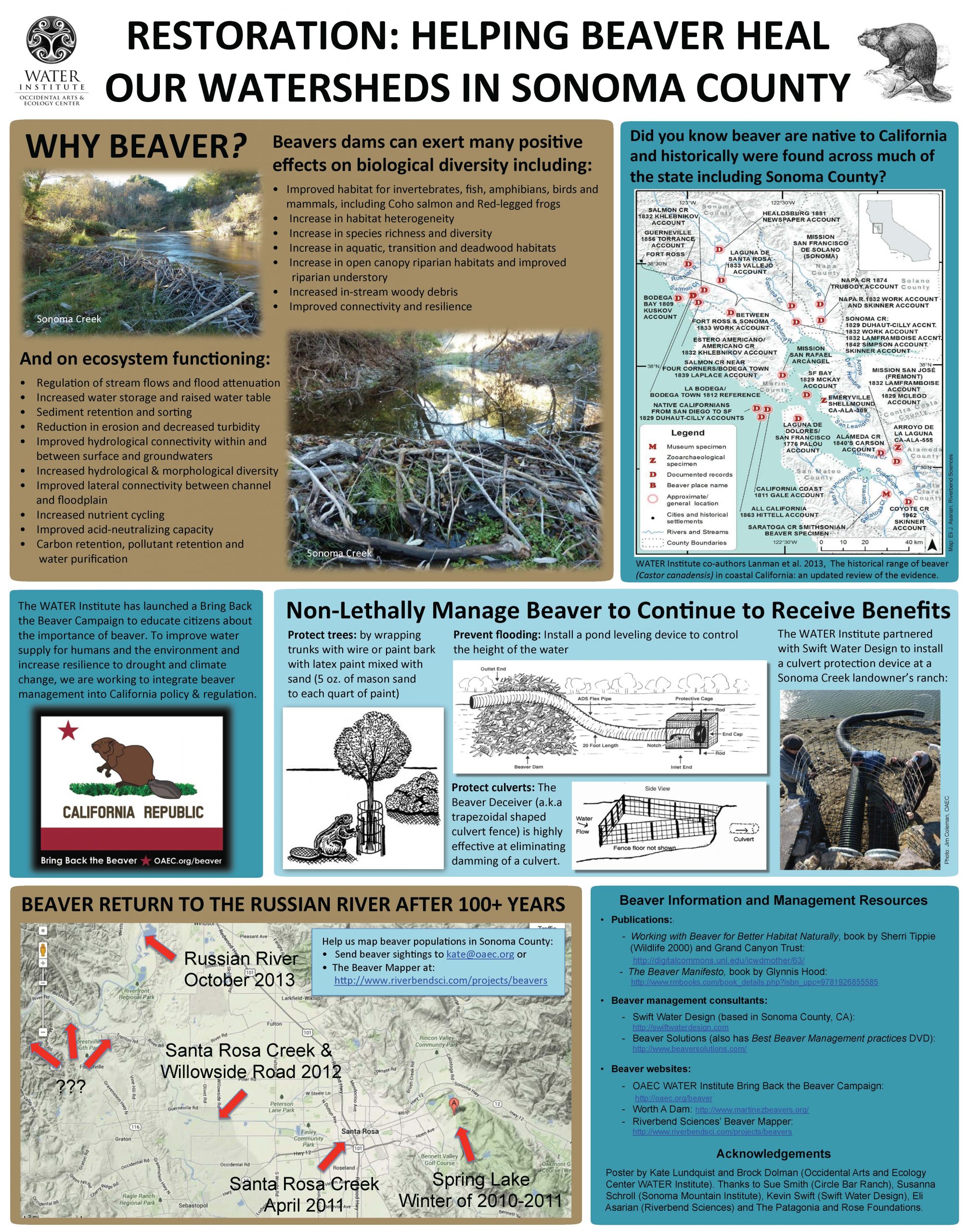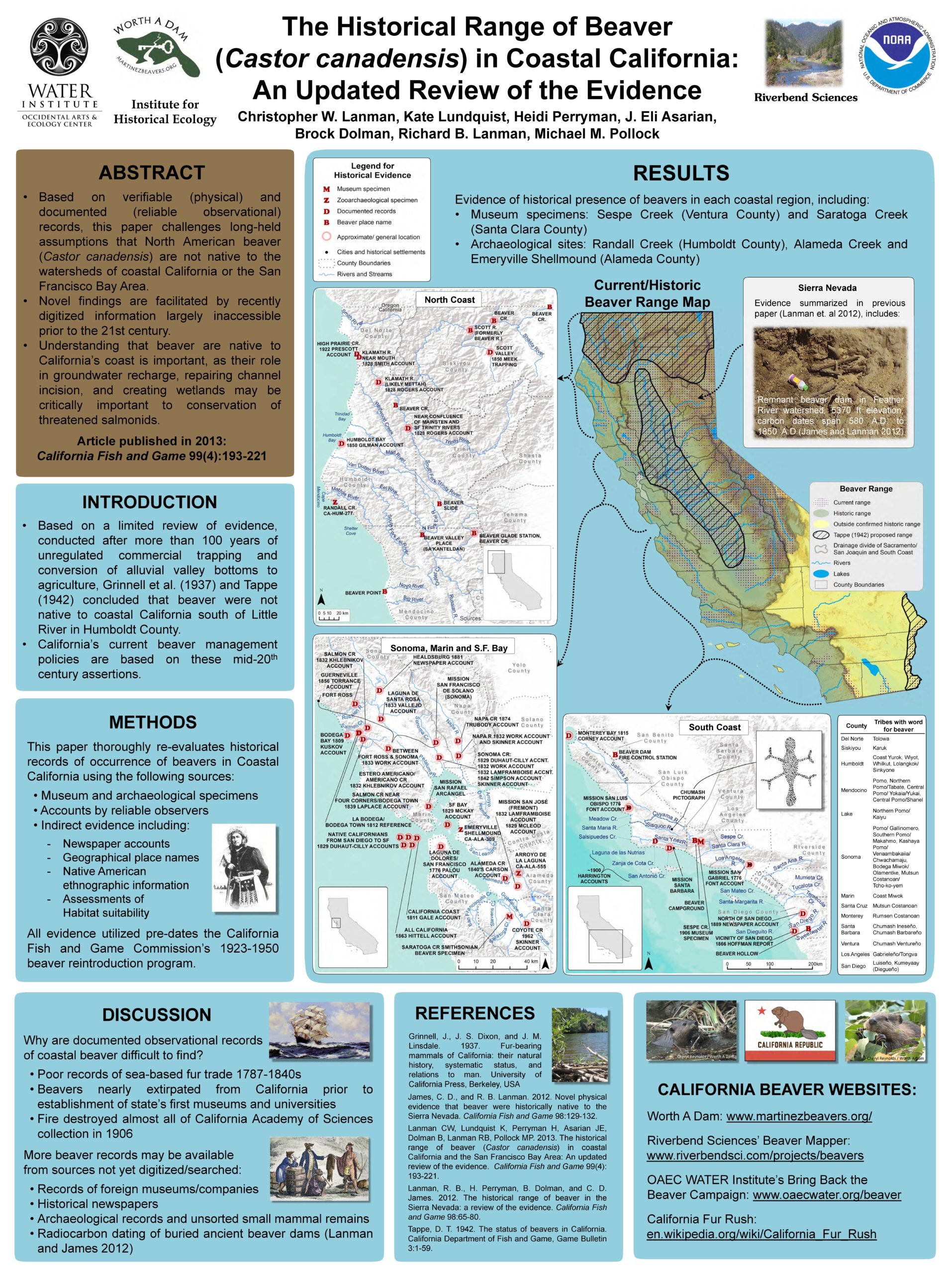DIY Guides
The OAEC WATER Institute has written up the following guides to help citizens, landowners, agencies and decision makers implement useful techniques to restore and protect the watersheds we live in and include extensive resource lists. Many of these reports describe projects we designed and installed as part of our conservation hydrology demonstration site at OAEC.

Basins of Relations – A Citizen’s Guide to Protecting and Restoring Our Watersheds (2018)
A 24-page WATER Institute booklet for individuals and groups working to educate about the myriad issues facing our watersheds and the steps we can take to preserve them. (3rd Edition, 2018)
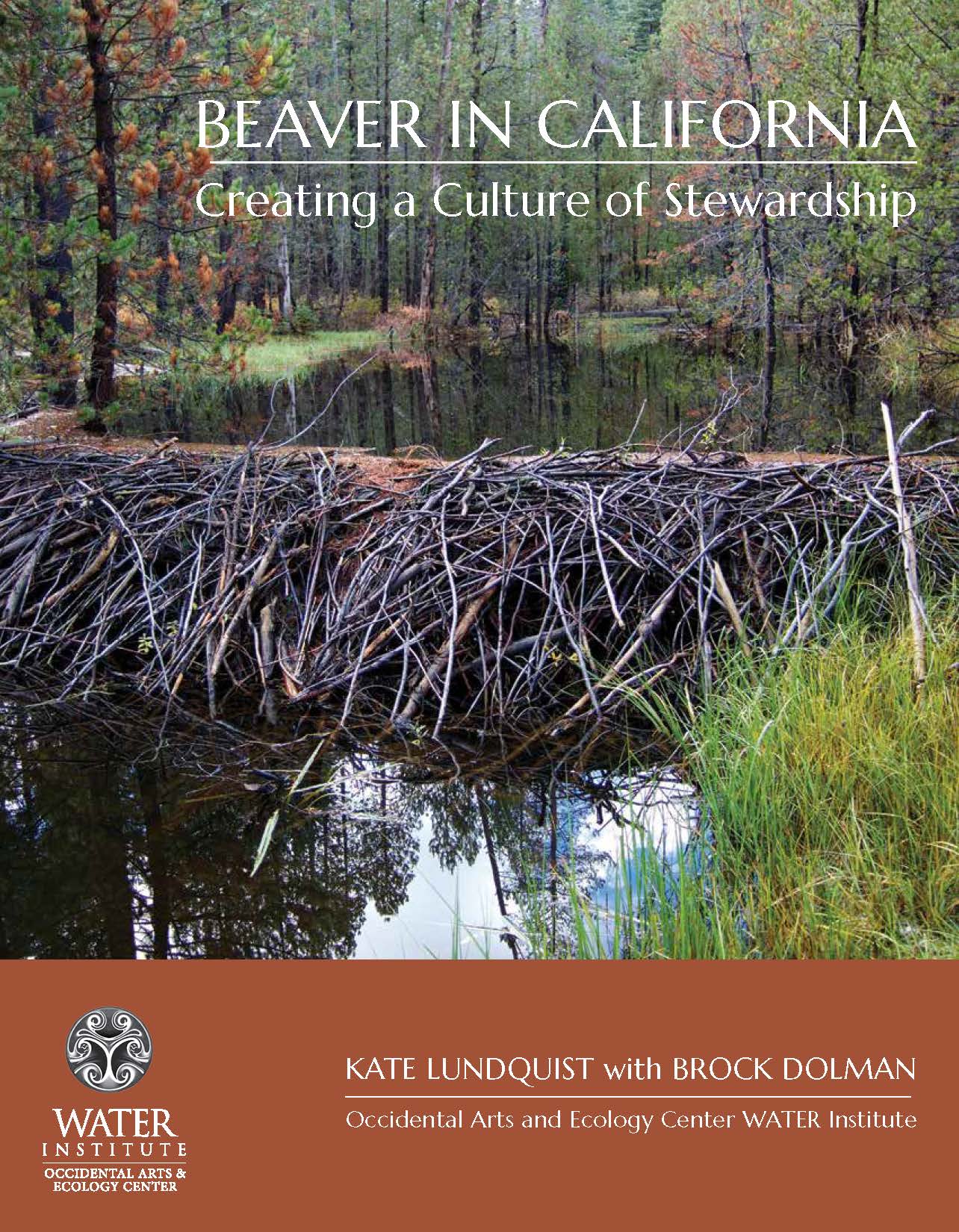
Beaver In California: Creating a Culture of Stewardship
A 30-page WATER Institute booklet about the history, ecology, benefits and restoration of beaver in California. (Version 4.0, 2020). Contact us at (707) 874-1557 x 101 to purchase a full-color copy $10
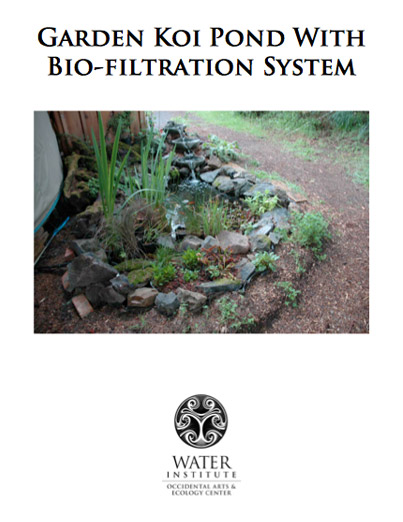
Garden Koi Pond With Bio-Filtration System
The following is the text and photos from a booklet written by the WATER Institute in 2007 and updated in 2011. Feel free to download this booklet and share the information widely.

Roofwater Harvesting In California: Obstacles and Opportunities
A 23-page WATER Institute report on roofwater harvesting in California (2011). The following is the text and photos from a report written by the WATER Institute in 2011. Feel free to download this booklet and share the information widely.
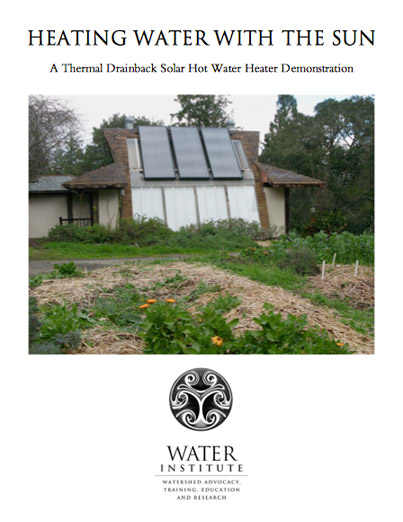
Heating Water With The Sun
A 10-page WATER Institute how-to on solar hot water heating. The following is the text and photos from a booklet written by the WATER Institute in 2009. Feel free to download this booklet and share the information widely.
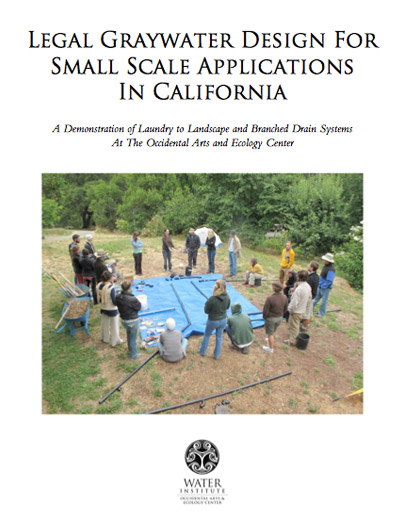
Legal Graywater Design for Small Scale Applications in California
An 11-page WATER Institute how-to on two legal graywater designs for residential applications. The following is the text and photos from a report written by the WATER Institute in 2010. Feel free to download this booklet and share the information widely.
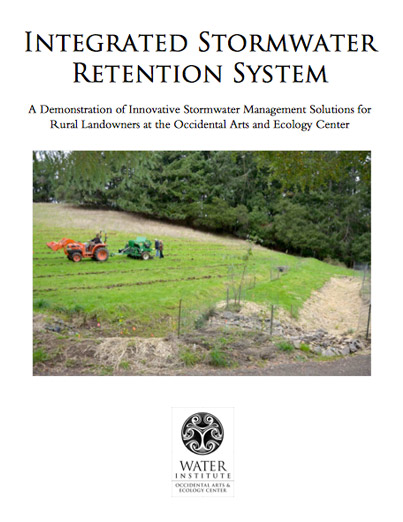
Integrated Stormwater Retention System
A 20-page WATER Institute report on rural stormwater management (2012).
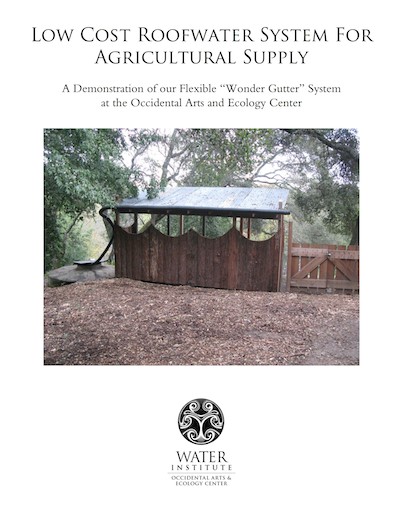
Low Cost Roofwater System For Agricultural Supply
An 11-page WATER Institute how-to on this simple agricultural roofwater catchment design. The following is the text and photos from a booklet written by the WATER Institute in 2011. Feel free to download this booklet and share the information widely.
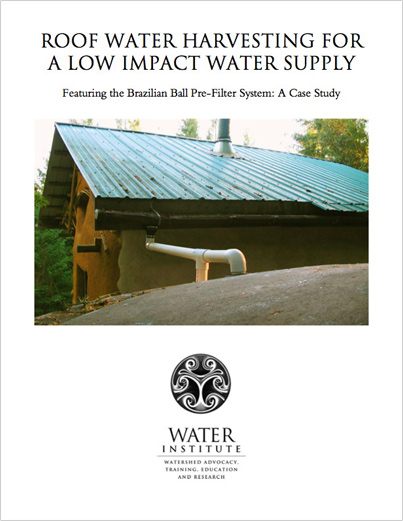
Roof Water Harvesting for a Low Impact Water Supply
A 27-page WATER Institute how-to on simple residential roofwater harvesting systems at OAEC. The following is the text and photos from a booklet written by the WATER Institute in 2008. Feel free to download this booklet and share the information widely.
Collaborations
To achieve both behavioral and systemic change, the WATER Institute has cultivated strategic partnerships with community-based organizations, agencies and centers of governance in both the rural and the urban areas of Northern California. The following publications are a product of these collaborative efforts.

The Russian River Coho Water Resources Partnership, 2022
For more than ten years, the National Fish and Wildlife Foundation (NFWF), with support from Sonoma Water, funded the creation of the Russian River Coho Water Resources Partnership, a highly coordinated effort between the Gold Ridge and Sonoma Resource Conservation Districts, Sea Grant California, Trout Unlimited, and the Occidental Arts & Ecology Center WATER Institute.

Working with Beavers on Sonoma Water Channels, 2022
This report is intended as a guide for Sonoma Water staff as they work in waterways where beavers live or where they could occur.

Fryer Creek Beaver Impact Analysis and Alternatives Development Report, 2021
This study examines current and future beaver activities in Fryer Creek, an engineered flood control channel within the urbanized Sonoma community.

Collaborative Water Management, 2023
A Guide to Enhancing Streamflow and Water Supply Reliability in California’s Rural Watersheds and Communities.
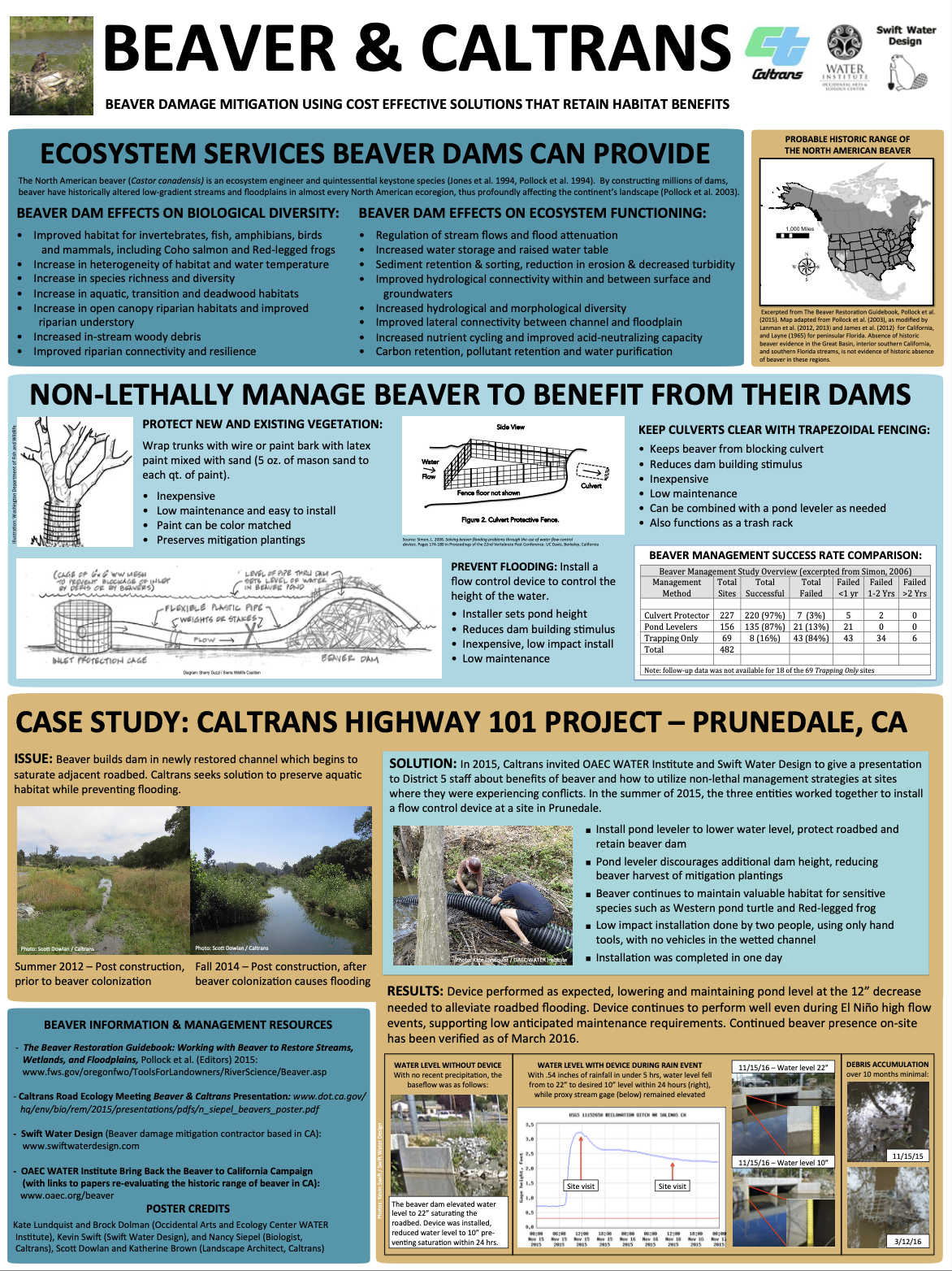
BEAVER AND CALTRANS, 2016 POSTER
This poster was created by the Occidental Arts & Ecology Center to highlight a beaver coexistence collaboration between Caltrans, OAEC WATER Institute, and Swift Water Design. The poster was presented at the annual Salmonid Restoration Federation conference in 2016.
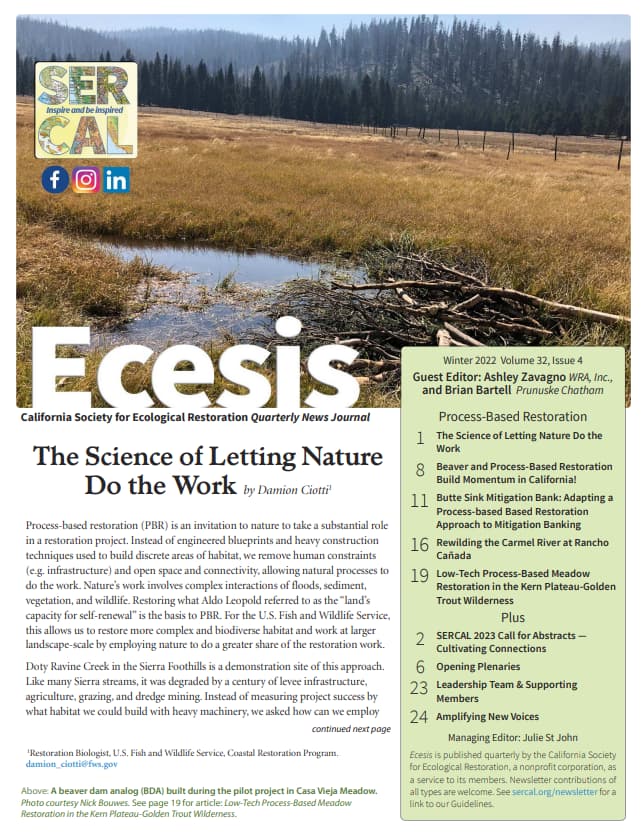
Beaver and Process-Based Restoration Build Momentum in California! Article in Ecesis, 2023
Kate Lundquist, Brock Dolman, and Hannah Wilton penned an article for the California Society of Ecological Restoration’s quarterly news journal.
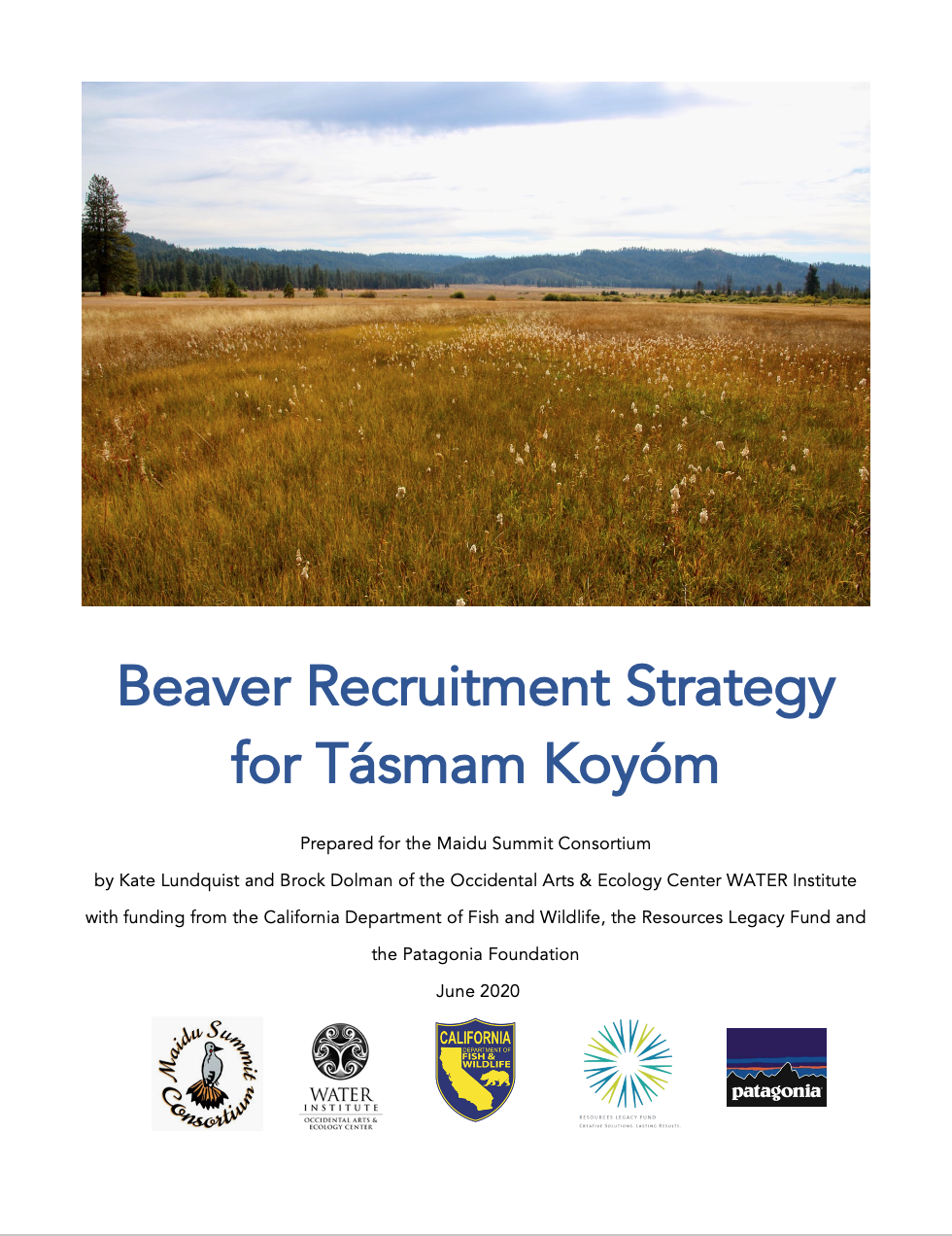
Beaver Recruitment Strategy for Tásmam Koyóm
This 53-page report was commissioned by the Maidu Summit Consortium to develop a strategy to recruit beaver to Tásmam Koyóm and the Yellow Creek watershed in Plumas County, California.

Slow it, Spread it, Sink it, Think it – article in Pacific Horticulture 2006
The “Slow Water Movement” mantra advises us to minimize topsoil loss and avoid siltation of the watershed, while optimizing the retention of water on site by encouraging it to sing in where it lands. This article introduces the basics of Conservation Hydrology and Brock’s slogan Slow It, Spread It, Sink It, Think It in this 2006 article by Katherine Cook in Pacific Horticulture Magazine, vol 67 no 1.
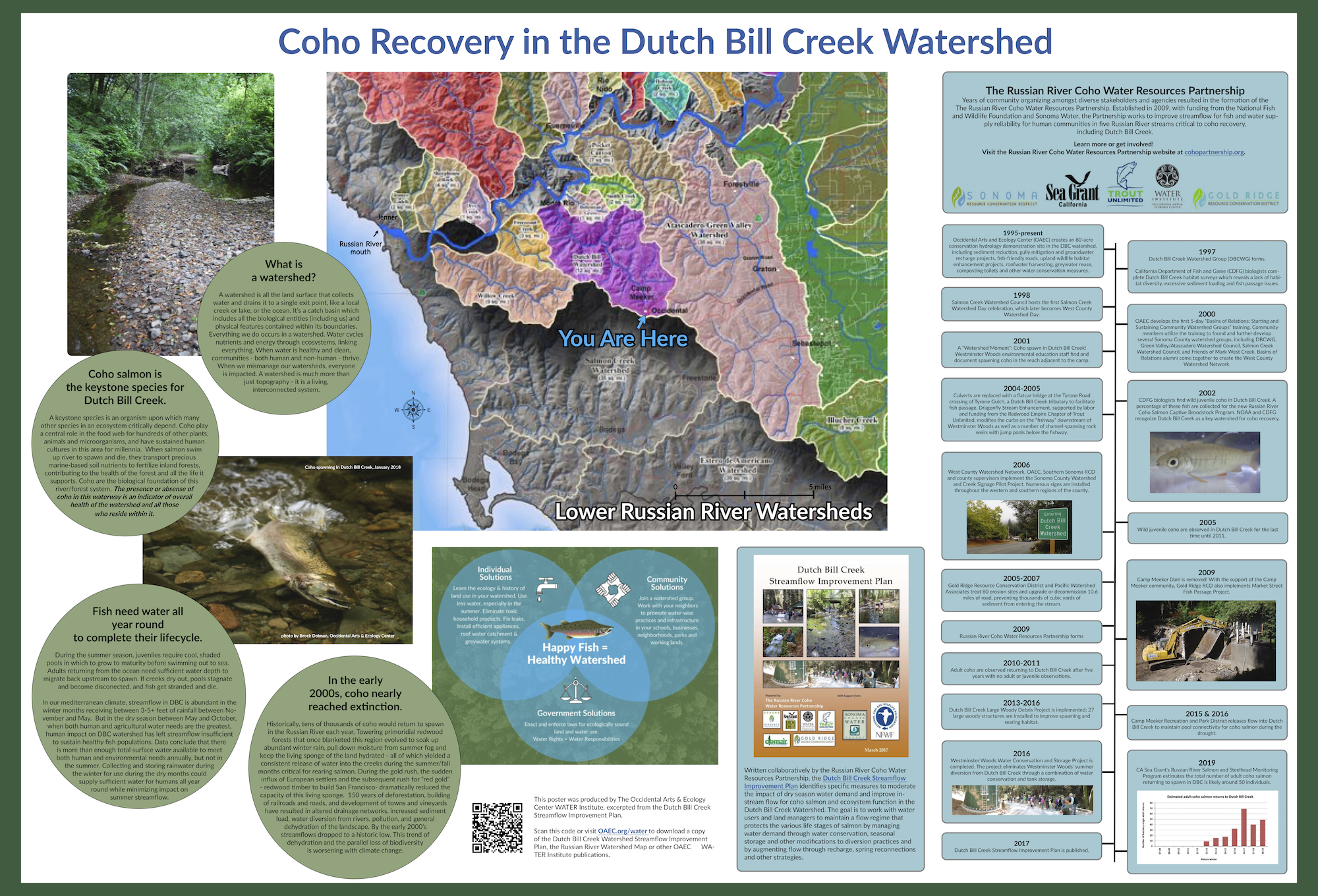
Dutch Bill Creek Coho Restoration poster
The Dutch Bill Creek Coho Restoration poster is installed in a display kiosk in downtown Occidental, CA at the watershed divide line between Dutch Bill Creek Watershed and Salmon Creek Watershed. It is a summation of the Dutch Bill Creek Streamflow Improvement Plan, published by the Russian River Coho Water Resources Partnership, with infographics, photos, map, and timeline geared toward educating the general audience of visitors to the town. In addition to raising overall “watershed consciousness,” the poster highlights the accomplishments of community restoration efforts to improve conditions for Coho salmon, the keystone species in Dutch Bill Creek.
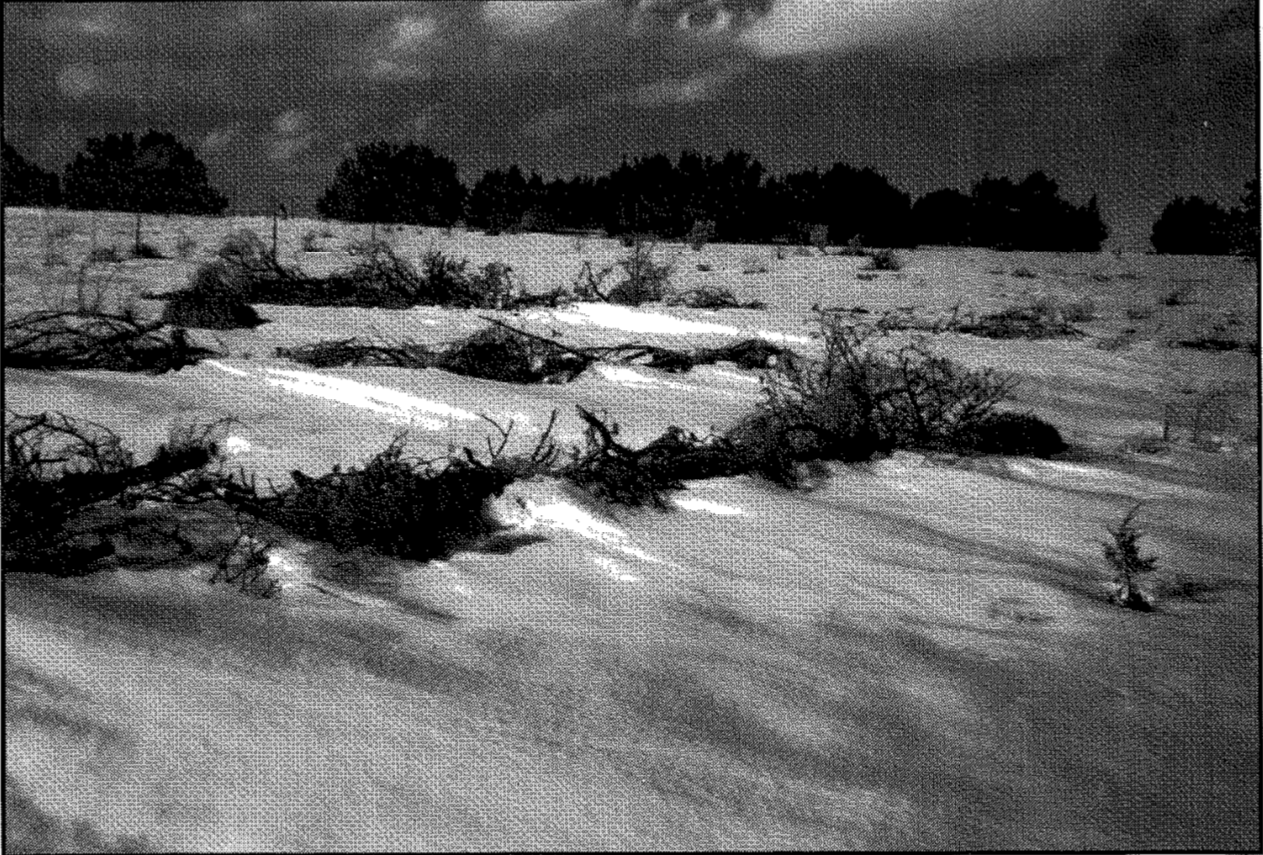
Ecotones – Towards a New “Edgeucation”
This article written by Brock Dolman was published in the Permaculture Drylands Journal in 1998. The article discusses the permaculture principle of “maximizing edges” or ecotones – the zone that is created when two distinct landscape forms come together. Brock puts forth the argument that while an edge zone may be richer in biodiversity in theory, in an age of habitat fragmentation due to development pressure, the ever increasing edge zone is only as rich as the interior zones that come together to make the edge.
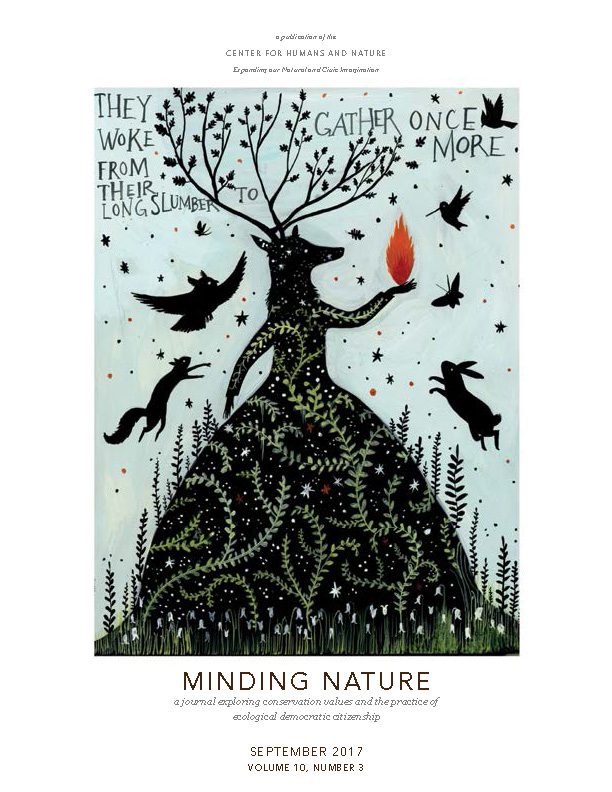
Welcome to Planet Water
WATER Institute Director, Brock Dolman, published this article in Minding Nature Journal from the Center for Humans and Nature in September of 2017. “All must be reflectively re-thought and retrofitted from the current dehydration and degradation design toward a new rehydration and regeneration design. We must move from the ‘drain-age’ to the ‘retain-age.'”
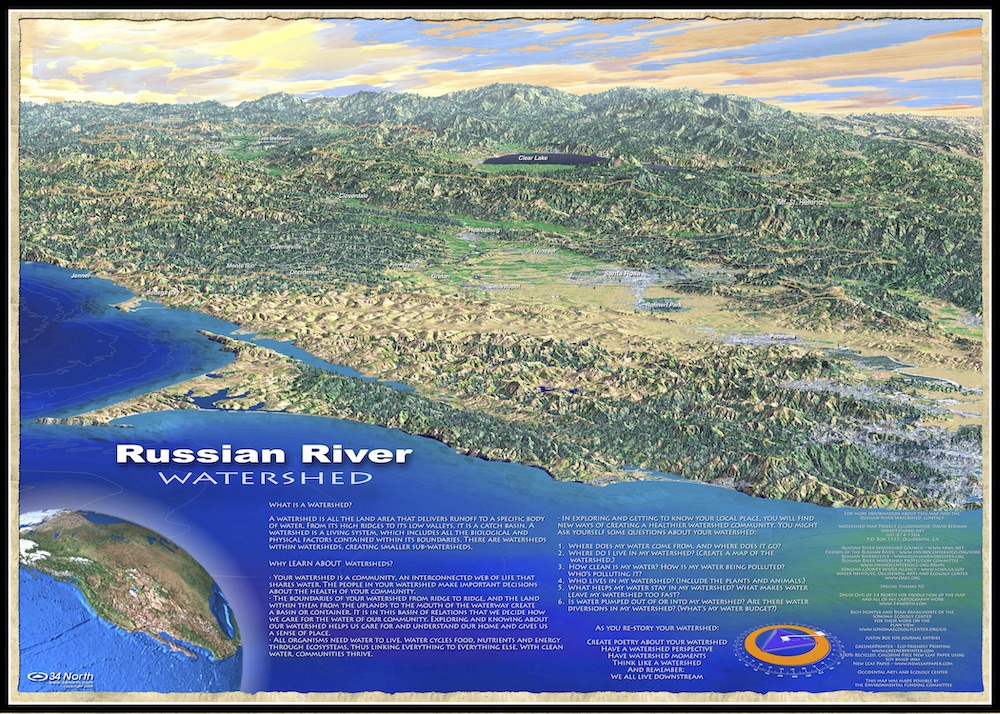
Russian River Watershed Map
This double-sided Russian River Watershed map includes a wideangle topo view of the entire range spanning several counties. The flipside shows the various creek/tributary sub-watershed territories of the Russian River, including our home Dutchbill Creek. This map is perfect for local naturalists and teachers – in the side bars are eco-logical literacy practice questions and activities for getting to know your own watershed.
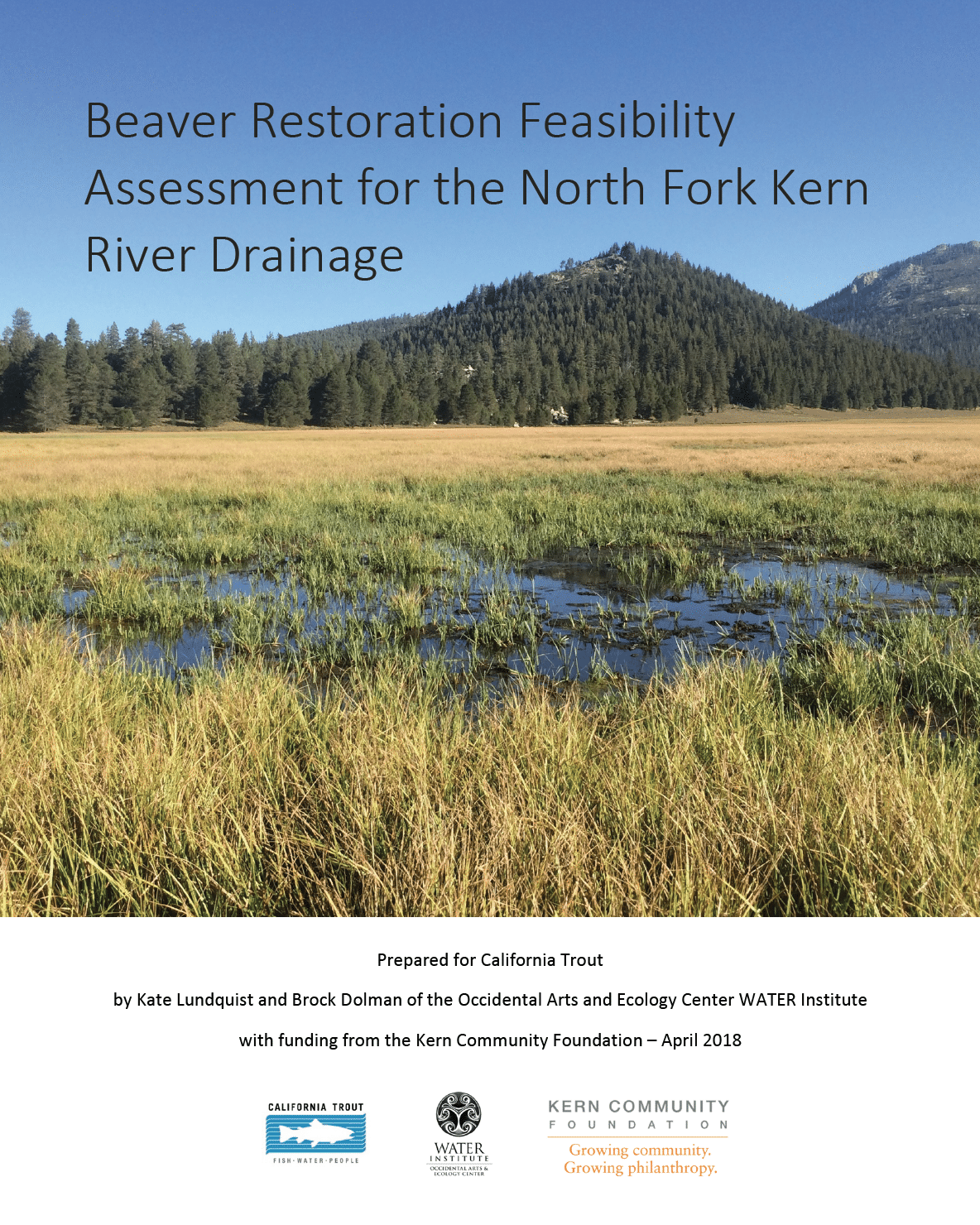
Beaver Restoration Feasibility Assessment for the North Fork Kern River Drainage
Kate Lundquist and Brock Dolman produced this 26-page report for California Trout in 2018.
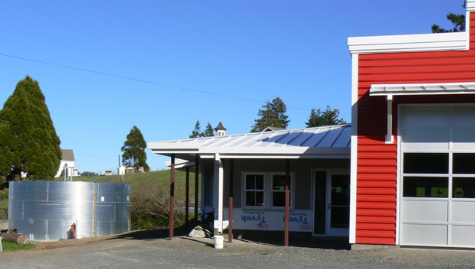
Bodega Valley Rainwater Catchment project
The Bodega Valley Rainwater Catchment & Alternative Water Supply Program is an example of a multi-pronged, community-based program to provide enhanced water security for residents and help restore stream flows during the dry summer months. This article describes the coordinated community planning, funding, and implementation of more than 12 different roof water harvesting systems for both private residential homes, the Bodega Fire Department (pictured here), and several local dairy operations.
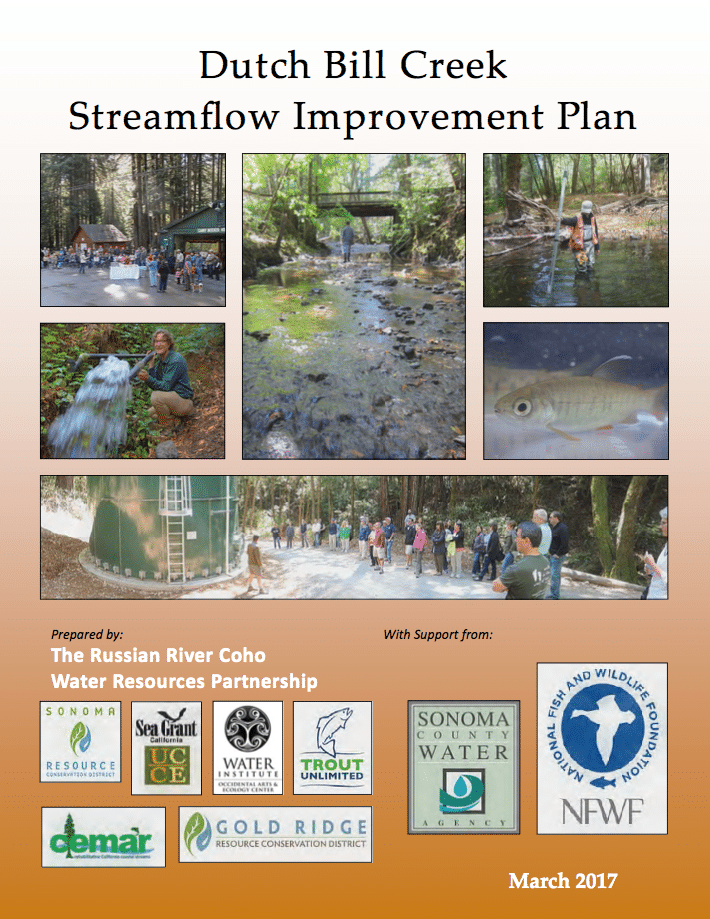
Dutch Bill Creek Streamflow Improvement Plan
This Streamflow Improvement plan (SIP), written by the Russian River Coho Water Resources Partnership, is a roadmap for prioritizing and implementing streamflow improvement projects with multiple public benefits and a diversity of approaches within OAEC’s home watershed of Dutch Bill Creek.

Restoring Summer Base Flow with Decentralized Water Management
Peer-reviewed scientific article. “Restoring Summer Base Flow under a Decentralized Water Management Regime: Constraints, Opportunities, and Outcomes in Mediterranean-Climate California” by OAEC WATER Institute Director, Brock Dolman and University of Florida researcher Matthew W. Deitch. Published in Water -Open Access Journal. Keywords: Mediterranean climate adaptation; coastal California; salmon restoration; water abstraction; hydrologic variability; streamflow seasonality; drought; human–environment interactions
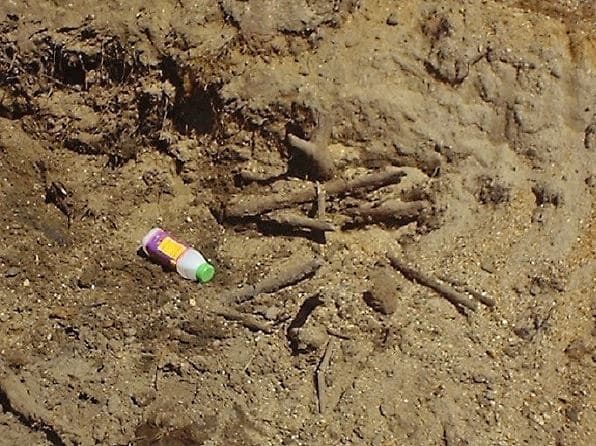
Novel Physical Evidence that Beaver were Native to the Sierra Nevada
This paper brings to light the buried beaver dam wood that was dug up in Sierra’s in the late 80’s and carbon dated to 580, 1730 and 1850 A.D. This is significant because it serves as scientific proof that beaver occurred in the Sierra before European settlers arrived (2012).
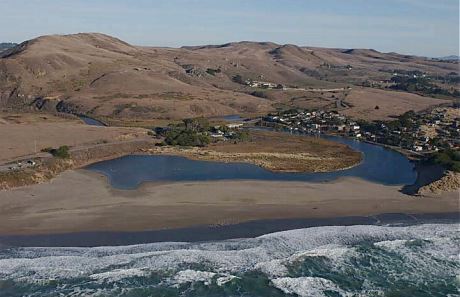
Habitat Enhancement in the Salmon Creek Estuary
The purpose of the Salmon Creek Estuary Habitat Structures Project is to improve habitat in the lower Salmon Creek estuary through installation of large wood structures and floating willow rafts. The instream habitat structures will provide refuge areas for salmonids and other aquatic species during high flows and cover from predation during low flow periods.
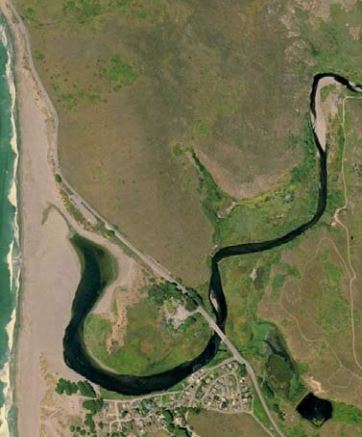
Salmon Creek Estuary Study
The Salmon Creek Watershed Council and OAEC received a grant to investigate the physical condition and functioning of the Salmon Creek tidal estuary, assess upstream factors that directly affect critical habitat in the estuary, collect historical information and develop recommendations to enhance habitat (2004).
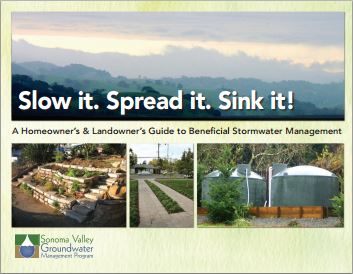
A Homeowner’s Guide to Beneficial Stormwater Management
OAEC WATER Institute contributed to this informative 62-page guide for Sonoma County (2010).
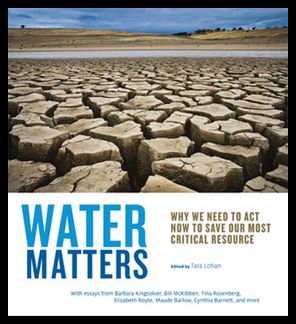
Water: Acting Now to Save Our Most Critical Resource
A call to action and a solution-focused guide to solving our global water crisis. Edited by Tara Lohan with a chapter by Brock Dolman (2010).
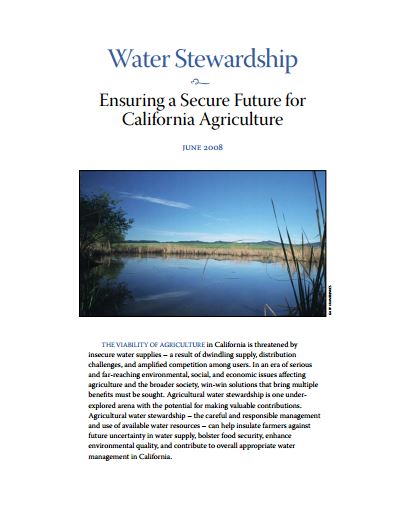
Water Stewardship: Ensuring a Secure Future for California Agriculture
Brock Dolman contributed to this report by the California Agricultural Water Stewardship Initiative. It is intended to launch a conversation to inspire strategic action and implementation of policies, programs, and farming practices founded in a water stewardship framework (2008).
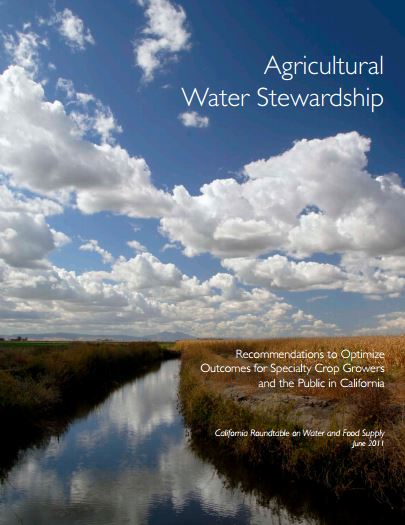
Optimizing Outcomes for Specialty Crop Growers and the Public in California
The WATER Institute sits on this Roundtable and contributed to the following report released by The California Roundtable on Water and Food Supply (2011).
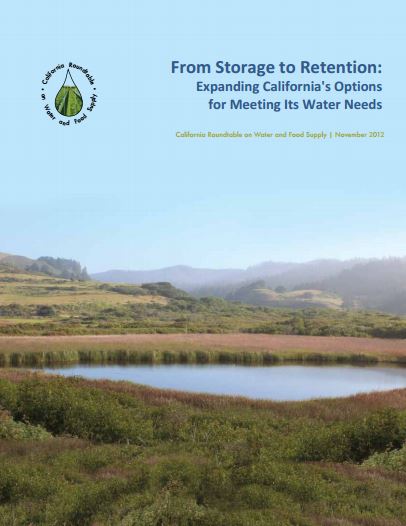
Expanding California’s Options for Meeting Its Water Needs
The WATER Institute sits on this Roundtable and contributed to the following report released by The California Roundtable on Water and Food Supply (2012).
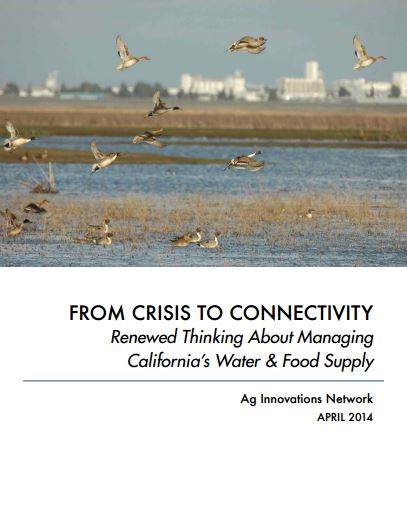
Renewed Thinking About Managing California’s Water & Food Supply
The WATER Institute sits on this Roundtable and contributed to the following report released by The California Roundtable on Water and Food Supply (2014).

The Historic Range of Beaver in the Sierra Nevada
Brock Dolman co-authored the “Beaver Historical Range” paper below which lists several forms of historic evidence (including the buried dam wood) that further prove that beaver were in fact native to the Sierra (2012).
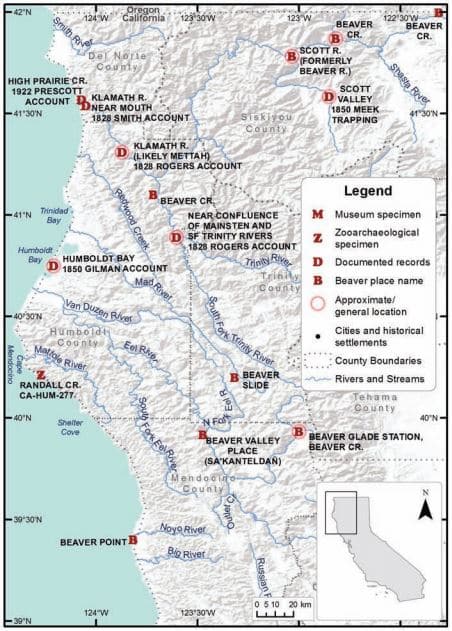
The Historical Range of Beaver in Coastal California:
Kate Lundquist and Brock Dolman co-authored this peer-reviewed scientific paper re-evaluating the historic evidence of beaver on the coast of California (2013).
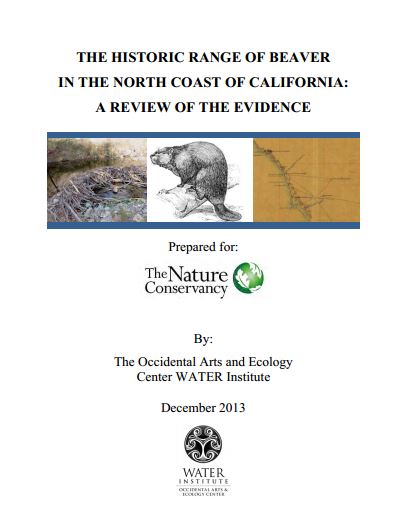
The Historic Range of Beaver in the North Coast of California
Kate Lundquist and Brock Dolman co-authored this report on the historic evidence of beaver in the north coast of California where Coho salmon occur. Includes detailed maps, tables and appendices (2013).
